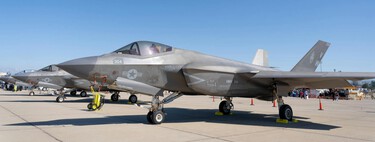The concept of a missile defense system to protect the U.S. from enemy attacks isn’t new. During the Reagan era, a proposed initiative called “Star Wars” ultimately never materialized. The Trump administration wants to revive this idea with modern technology and a more imposing name: “Golden Dome.”
SpaceX technology. According to Reuters, a technology consortium headed by SpaceX is in the lead to develop part of the Golden Dome project.
SpaceX’s proposed defense system consists of a constellation of 400 to more than 1,000 satellites. This constellation is designed to detect enemy missiles, track their trajectories, and assess whether they threaten U.S. territory.
In addition, a separate fleet of about 200 satellites would be equipped with missiles or lasers tasked with intercepting these missiles. However, the SpaceX-led group wouldn’t be involved in this offensive part of the system, according to Reuters.
Old friends. Two other technology companies, Palantir Technologies and Anduril Industries, are joining SpaceX in this initiative.
Palantir is a software company focused on government solutions. Alex Karp and Peter Thiel, both associates of SpaceX CEO Elon Musk, co-founded it. Meanwhile, Anduril specializes in military drones and autonomous defense technologies. Its most notable founder is Palmer Luckey, creator of the Oculus Rift virtual reality headset. Musk, Karp, Thiel, and Luckey are known for their alignment with President Donald Trump and contributed significantly to his campaign.
A subscription model. Interestingly, the proposed approach features an unconventional twist for a defense contract of this scale: a subscription model. Instead of purchasing and owning the satellite infrastructure outright, the Pentagon would pay a fee to access its services.
This model could reportedly streamline implementation by bypassing traditional Pentagon procurement processes. However, it may also tie the government to a single provider, limiting its control over future technology development and pricing.
Following the Reuters report, which sparked discussions about potential conflicts of interest, Musk shared on his X account, “This is not true.”
From Iron Dome to Golden Dome. The inspiration behind the name is evident: It references Israel’s Iron Dome. However, the differences are significant. Israel is a small country facing short-range threats. The U.S. is a vast nation exposed to attacks from multiple fronts, including new challenges like hypersonic missiles developed by Russia and China. With their unpredictable trajectories and extreme speeds, these missiles pose a challenge to current defense systems.
Replicating the Iron Dome on a large scale for the U.S. is both technically and economically impractical. As such, the most viable alternative currently being considered is a solution based on the Starlink satellite constellation. Estimated costs range between $6 billion and $10 billion.
A more political than defensive initiative. SpaceX and its technology partners appear to be in the lead. However, traditional defense giants such as Lockheed Martin, Northrop Grumman, RTX, and Boeing are also competing to win the contract. In fact, the Pentagon has received proposals from more than 180 companies.
The crucial question is whether the Golden Dome can genuinely represent a revolutionary defense against real threats such as hypersonic weapons and orbital bombardment systems. It could merely be an electoral promise rather than a practical military strategy. Predicting Trump’s next steps is often uncertain.
Image | Stephan Kaluzhskii



